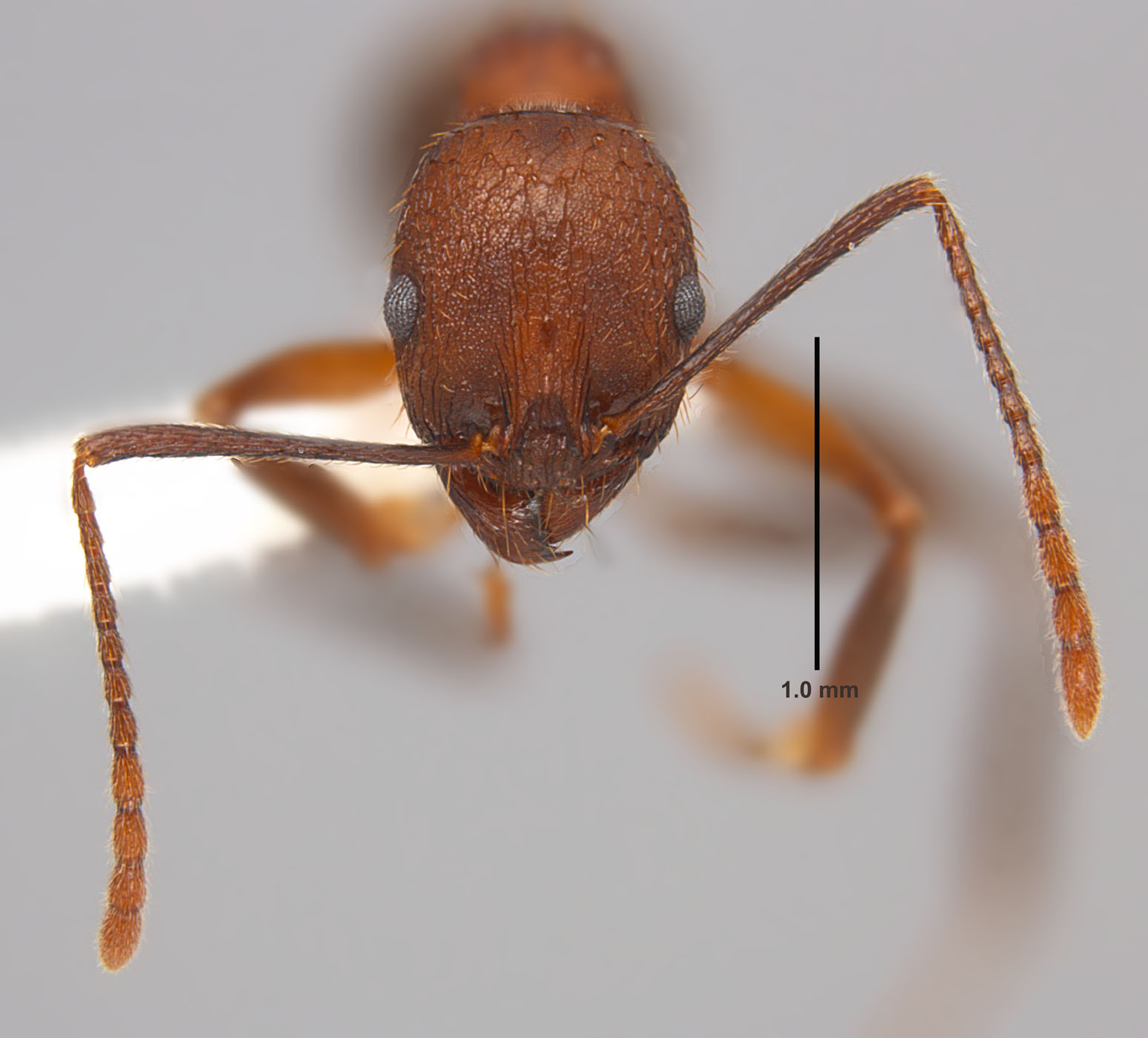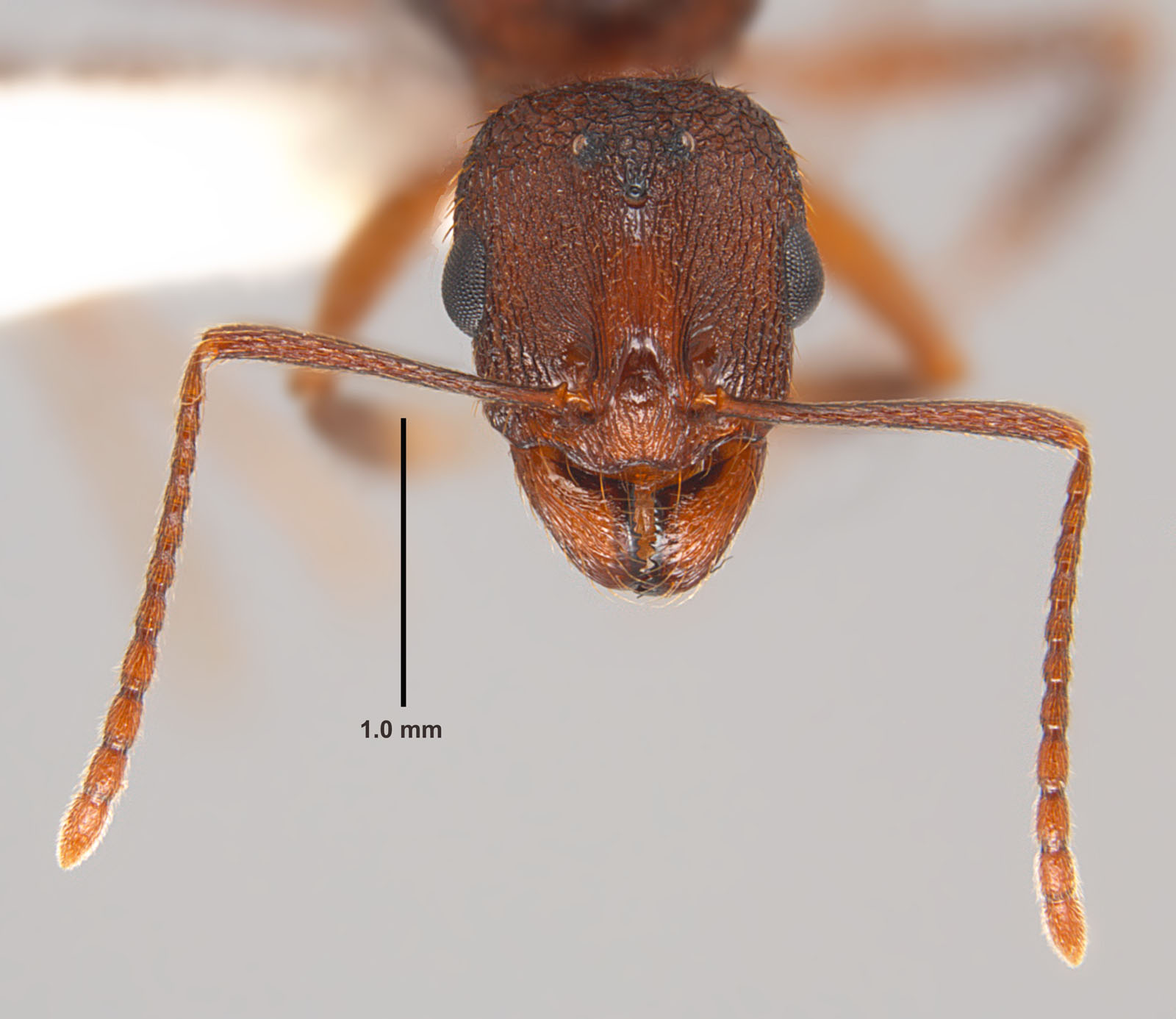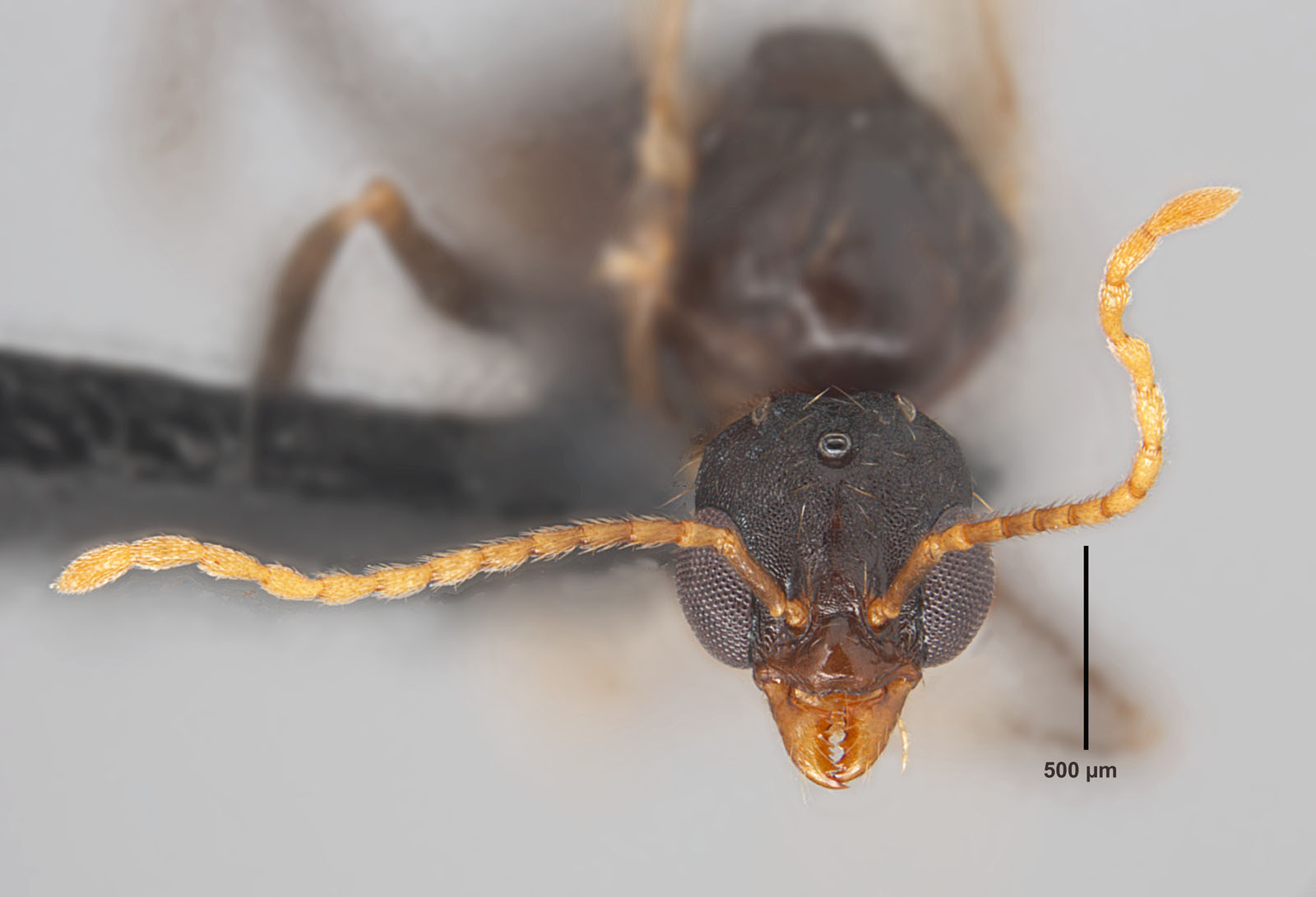Subfamily MYRMICINAE Author: Joe A. MacGown |
||
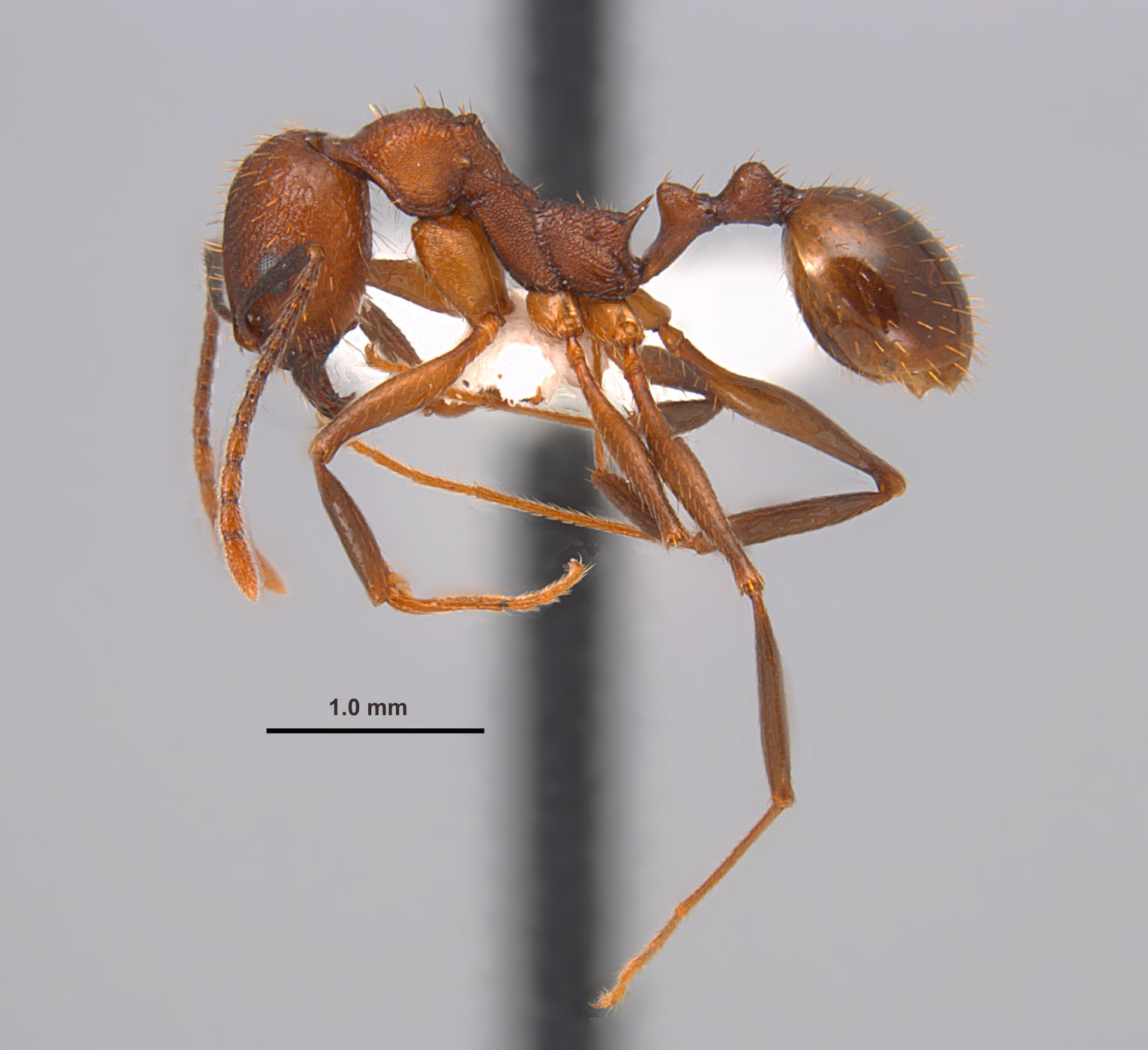 Aphaenogaster fulva, lateral view of worker (MISS, Lauderdale Co.). (photo by Ryan Whitehouse and Joe A. MacGown) |
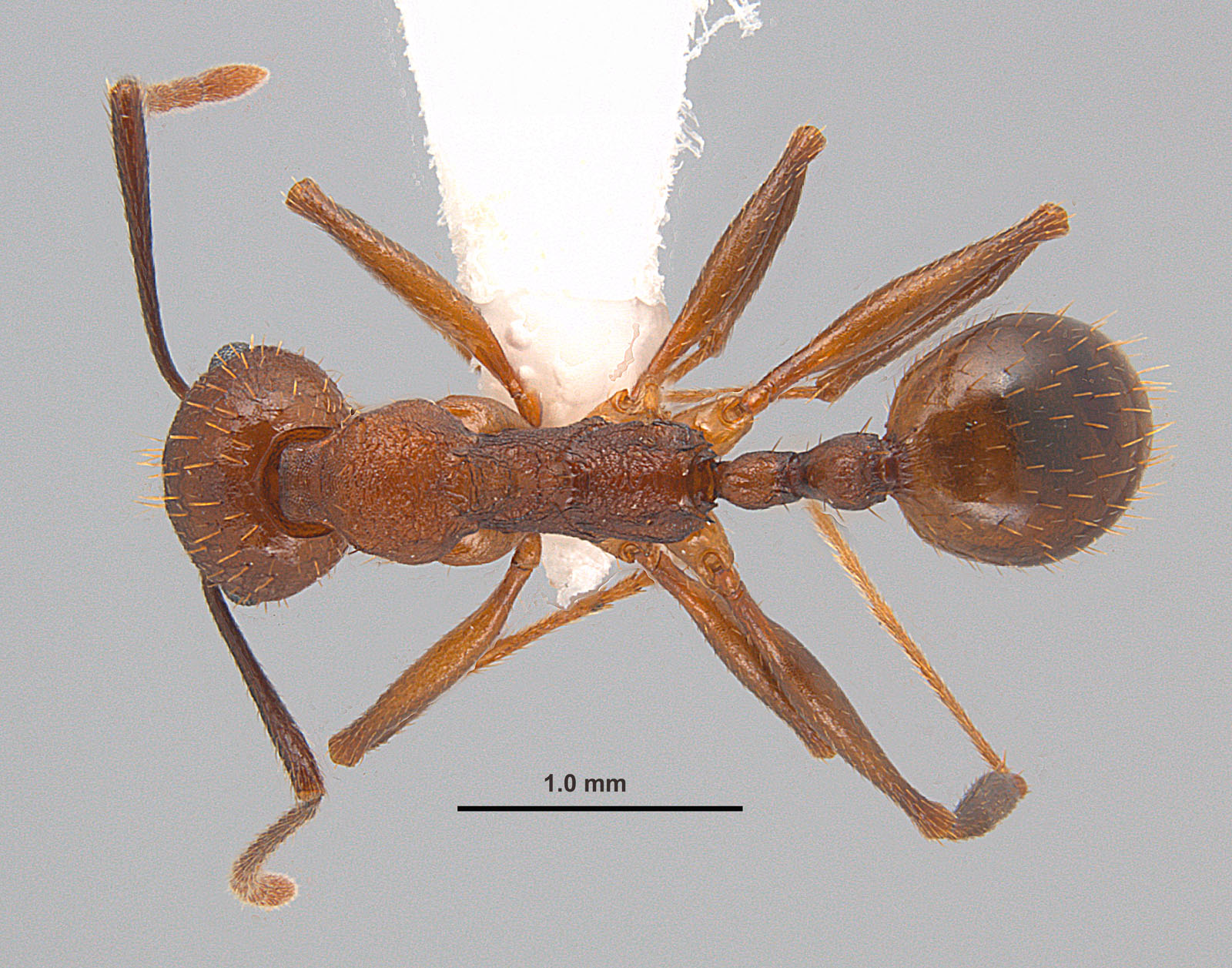 Aphaenogaster fulva, dorsal view of worker (MISS, Lauderdale Co.). (photo by Ryan Whitehouse and Joe A. MacGown) |
|
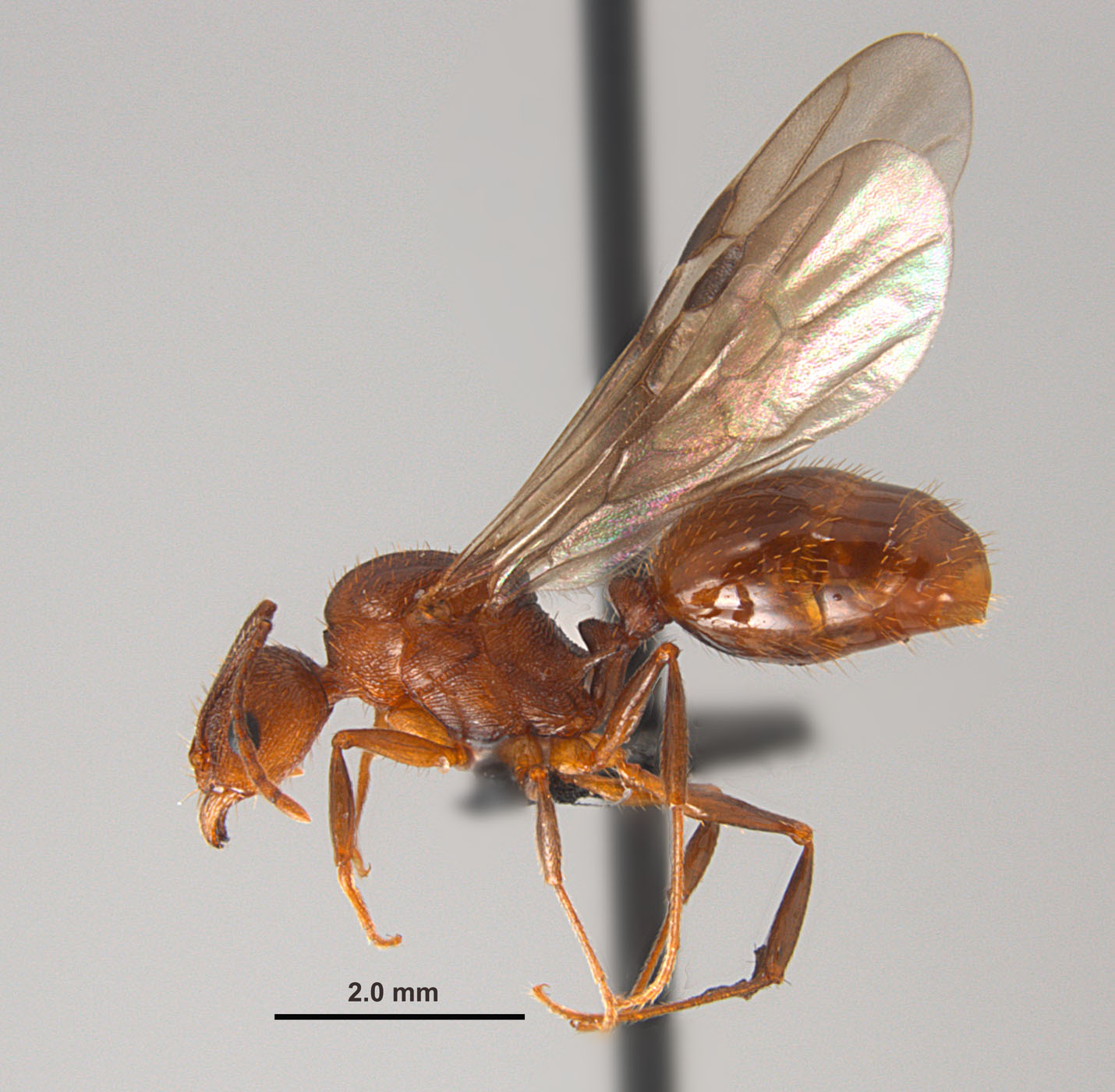 Aphaenogaster fulva, lateral view of alate queen (MISS, Winston Co.). (photo by Joe A. MacGown) |
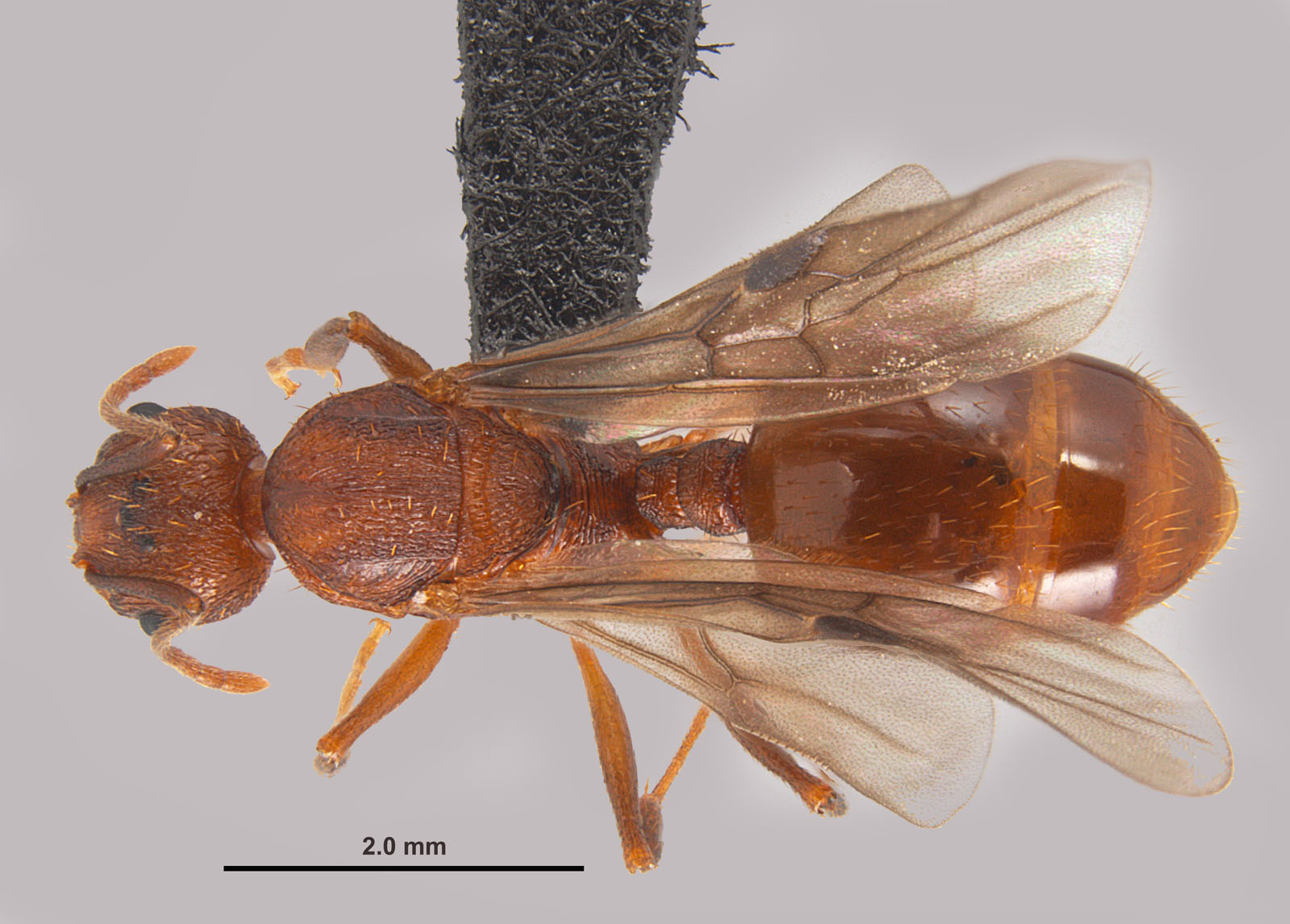 Aphaenogaster fulva, dorsal view of alate queen (MISS, Winston Co.). (photo by Joe A. MacGown) |
|
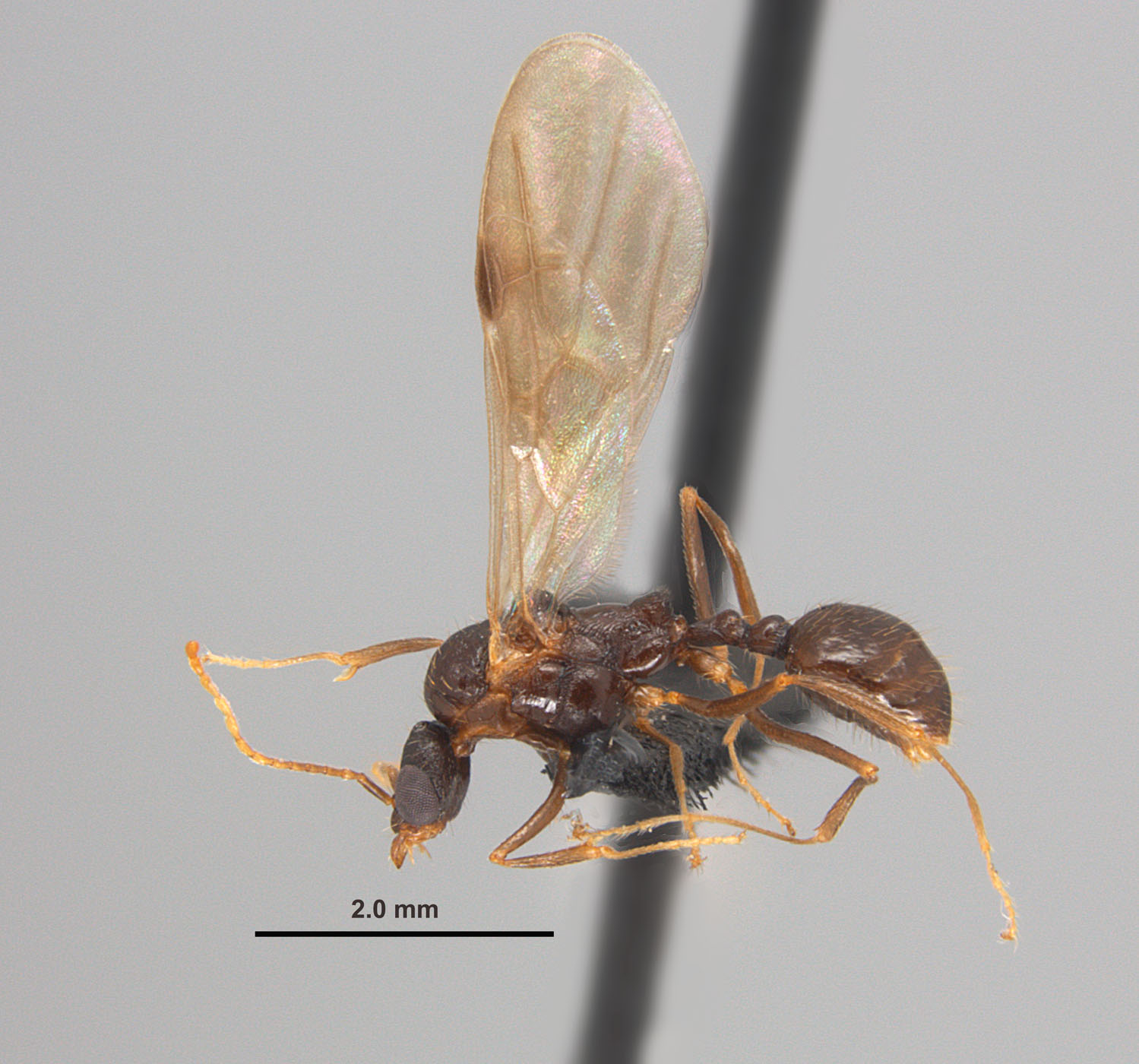 Aphaenogaster fulva, lateral view of alate male (MISS, Winston Co.). (photo by Joe A. MacGown) |
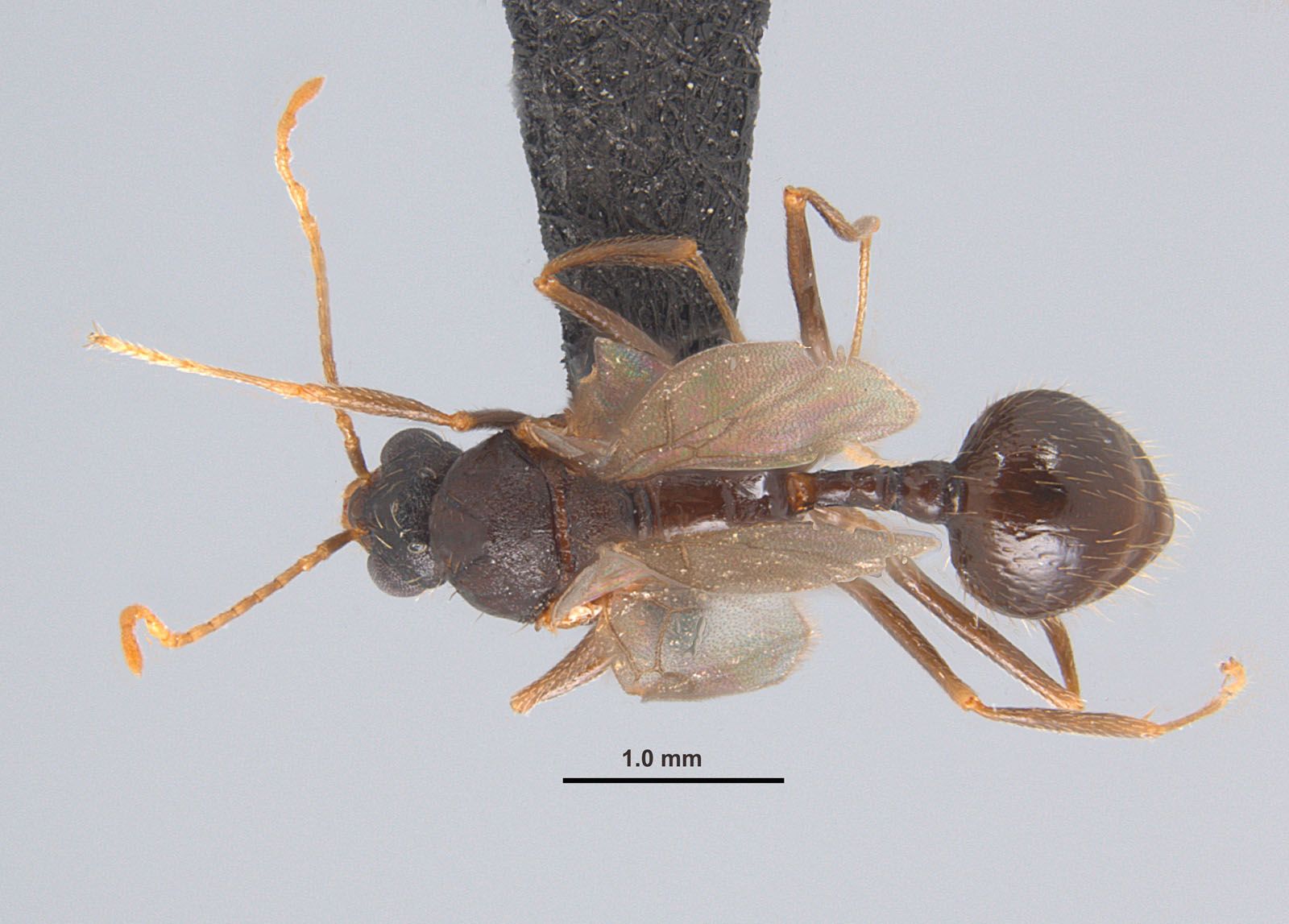 Aphaenogaster fulva, dorsal view of alate male (MISS, Winston Co.). (photo by Joe A. MacGown) |
|
Aphaenogaster fulva, colony in rotting log. |
||
Introduction Identification Biology and Economic Importance Natural History: [by James Trager] This abundant forest and woodland ant forages around the clock in clement weather, and is second only to A. rudis in abundance and conspicuousness among forest ants, especially south of the Missouri River. Readily attracted to proteinaceous and oily baits, the natural food of A. fulva consists of larvae, termites and virtually any other invertebrate prey they can capture. Larger prey may be subdued en masse by "spread-eagling". Elaiosome-bearing seeds are also harvested in numbers, and it is claimed this species and others of the fulva-rudis complex are among the most important dispersers of seeds of the spring ephemeral flora in the deciduous forest biome of eastern North America. I have never seen them seeking honeydew or nectar, though captive colonies eagerly take sugar water or honey, and they probably do lap up droplets from leaf litter surfaces. Brood of this and other soil-nesting Aphaenogaster species may constitute the primary prey item of Neivamyrmex nigrescens and perhaps other army ants. Flight period: We have collected alates in MS from mid June to mid July. Economic Importance: Although this species has the potential to sting, it is unlikely to pose any serious threat due to its non-aggressive behavior. I have handled thousands of this species and never received a sting, even when they were crawling all over me! Due to its abundance in the landscape, it could be an occasional nuisance pest in the home as workers forage for food. Distribution Literature Cited |
||


